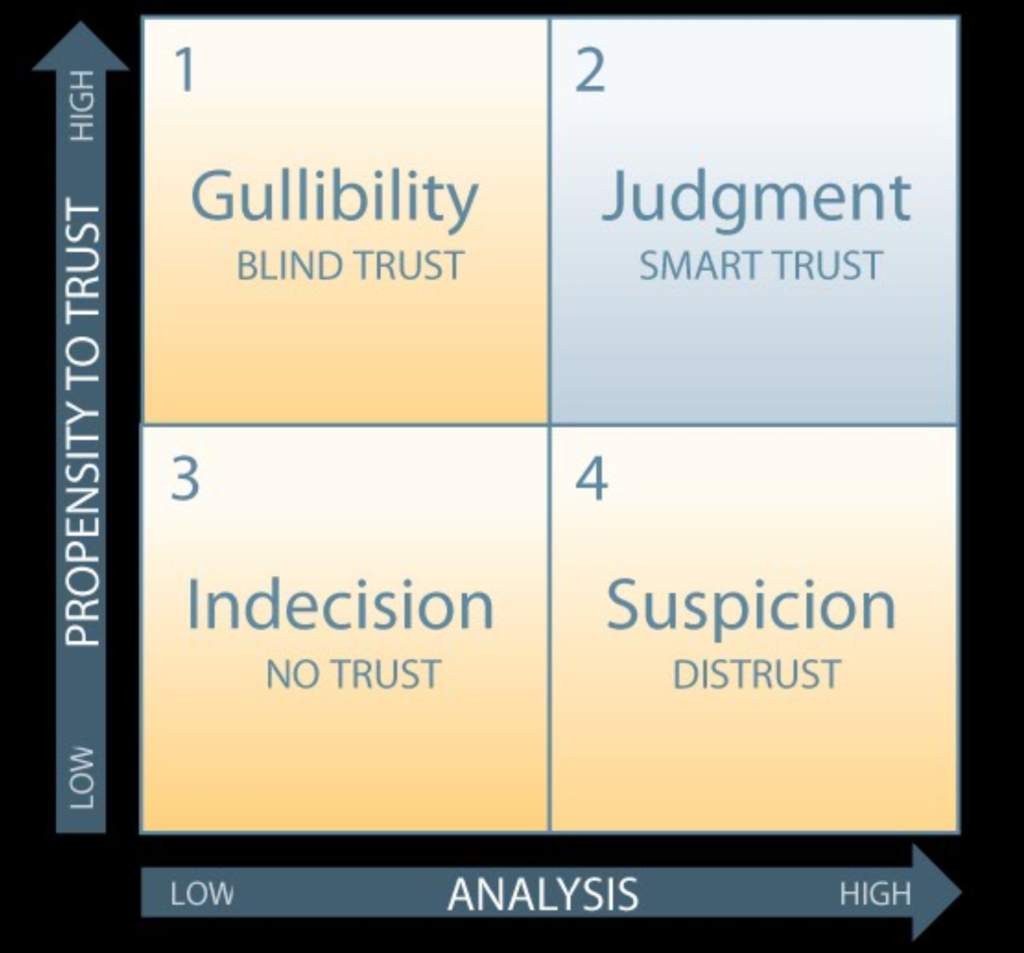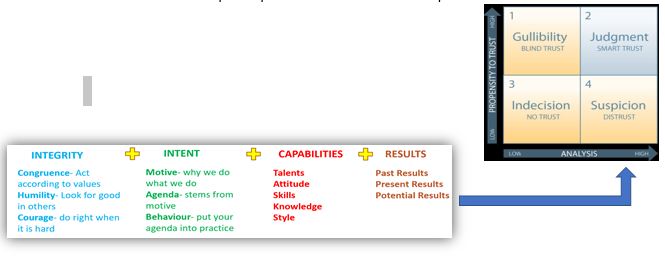The NSW inquiry into whether Star Casino should keep its license is a timely reminder of the role Board must play to ensure healthy conditions for success are in place and being maintained.
The director narrative seems to be ‘we should have asked more questions’ and ‘we should have paid more attention to the competencies and skills and resources in the risk, compliance and legal function.’ he (John O’Neill) said gravely. (AFR O’Neill struggles to explain Star’s downfall, 24 MAY 2022)
All organisations require some level of trust to function effectively no matter what systems and processes are in place to provide oversight. But what is trust? How is it attained and is that trust misplaced?
To help Company Directors and other leaders to answer those questions the following frameworks from The Speed of Trust: the one thing that changes everything by Stephen MR Covey.
The SMART TRUST MATRIX

This is a very helpful matrix. Leaders are encouraged in corporate life to build trust. There are different forms of trust. The propensity to trust is a reasonably well understand trait. We can likely plot ourselves against that axis quite well. It may also shift based on the circumstances ie if the risk is small we may have a higher propensity to trust than if the risk was high. (You would hope that was the case).
The analysis axis is far more interesting for the purposes of this article. What is good analysis of trust? Most people use their past experiences to form the basis of their personal analysis and this is likely to take place in the subconscious; playing to our biases. The problem with this approach as a company director or senior leader is that there are many experiences in the role that are unique and by their nature high risk as playing out for STAR at present. A high stakes game requires more deliberate attention.
THE 4 CORES OF CREDIBILITY

Covey postulates that credibility is built on the sum of integrity, intent, capability, and results. However, for each of us, it is a unique combination with probably one dimension playing a dominant role. It is also critically important that the context and inherent risks play a part in the recipe. In the context of the Star inquiry, was there an inappropriate dominance of one of the elements to the detriment of the others? In such a situation the Board should deliberately look for strong signs of the other elements in the management ranks. If you listen carefully people divulge their credibility dominance assessment through their language. Mr O’Neill has expressed a high propensity to trust and identified a gap in capability. Time will tell if other gaps in credibility played a significant role.
Integrating the two tools arms the company director to overcome subconscious bias in the approach to evaluating the needs of the organisation in critical roles and matching the individuals’ abilities to those roles. This concept is explored further in our workshop “PROJECTS IN THE BOARDROOM”

